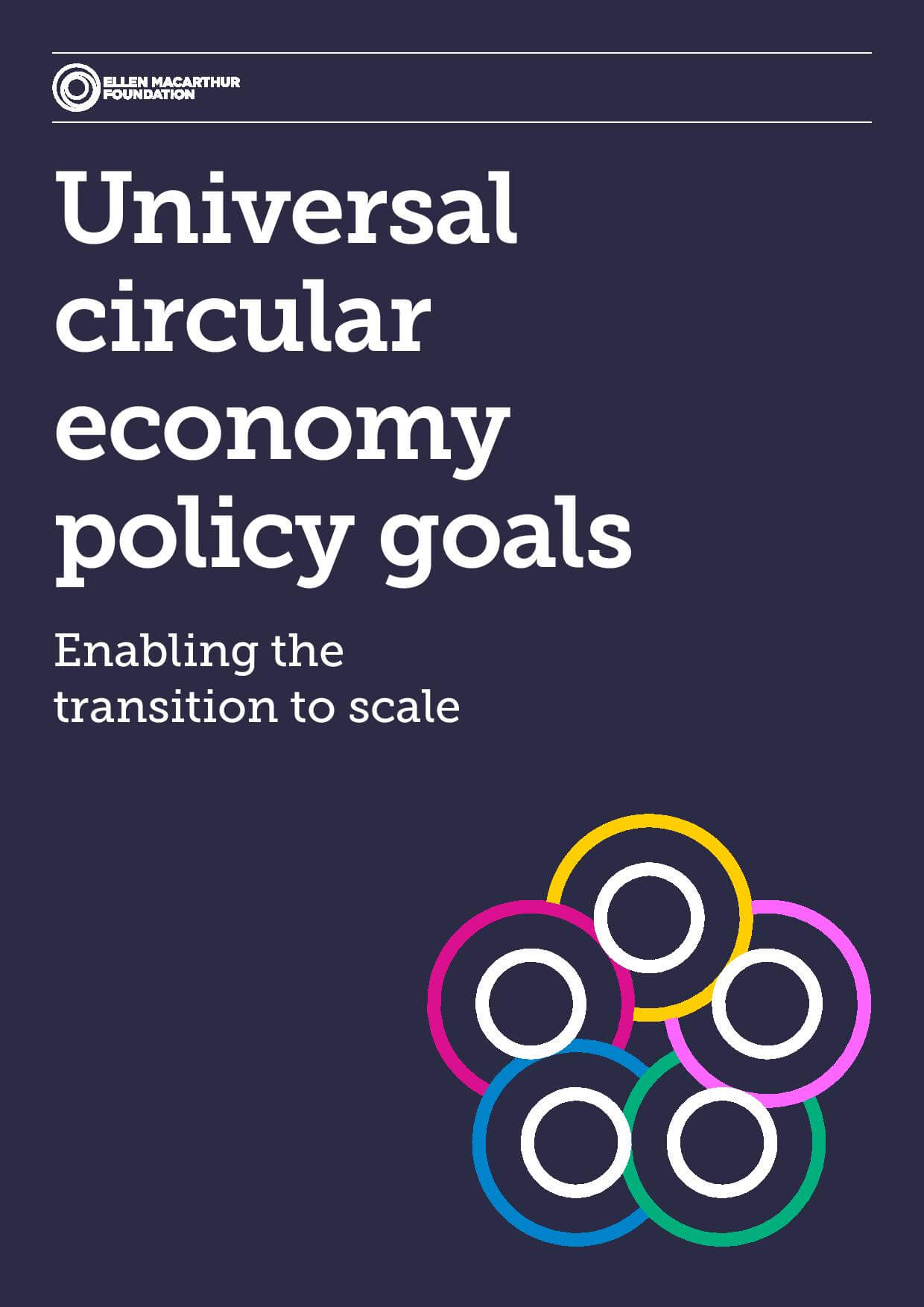
Report: How can businesses thrive in a sustainable economy?
This paper highlights the limitations and misalignment of current business models with the objectives of a sustainable economy as defined by the Doughnut Economics model. Drawing from case studies, the report investigates how business models need to change to fit into a sustainable economy, and presents a new framework for companies and investors to assess an organisation’s alignment with a sustainable economy.
AUTHORS
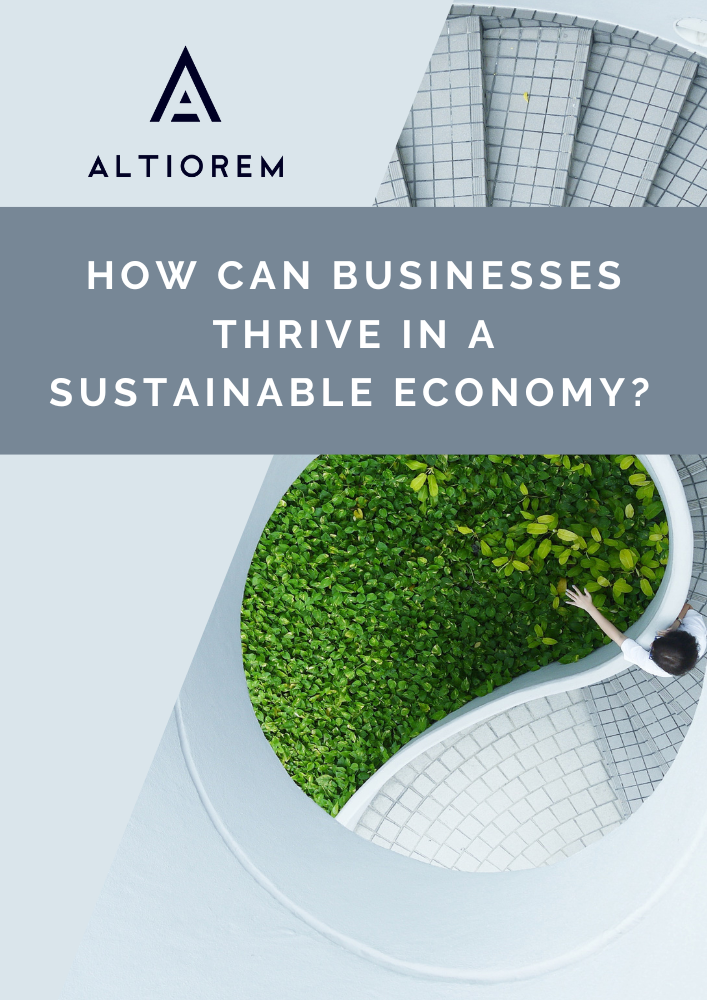
Summary of key findings
The report argues that there are fatal flaws in the current economic system, which is built on unsustainable principles of continuous growth and profit maximisation and is linked to increasing environmental challenges and social inequalities.
There is an urgent need to rethink and rebuild the economic system. To date, mainstream models have been based on frameworks including the United Nations Sustainable Development Goals or the Paris Agreement. However, it is time to consider alternatives, and Doughnut Economics offers a framework for a sustainable, regenerative, and distributive economy where both society and nature thrive.
Until this research, it has not been clear how business models can change to fit into a sustainable economy. The report addresses the gap in research and takes these ideas further by exploring what business model characteristics will be needed to thrive in a sustainable economy.
Scroll down to view the report.
Watch the event launch
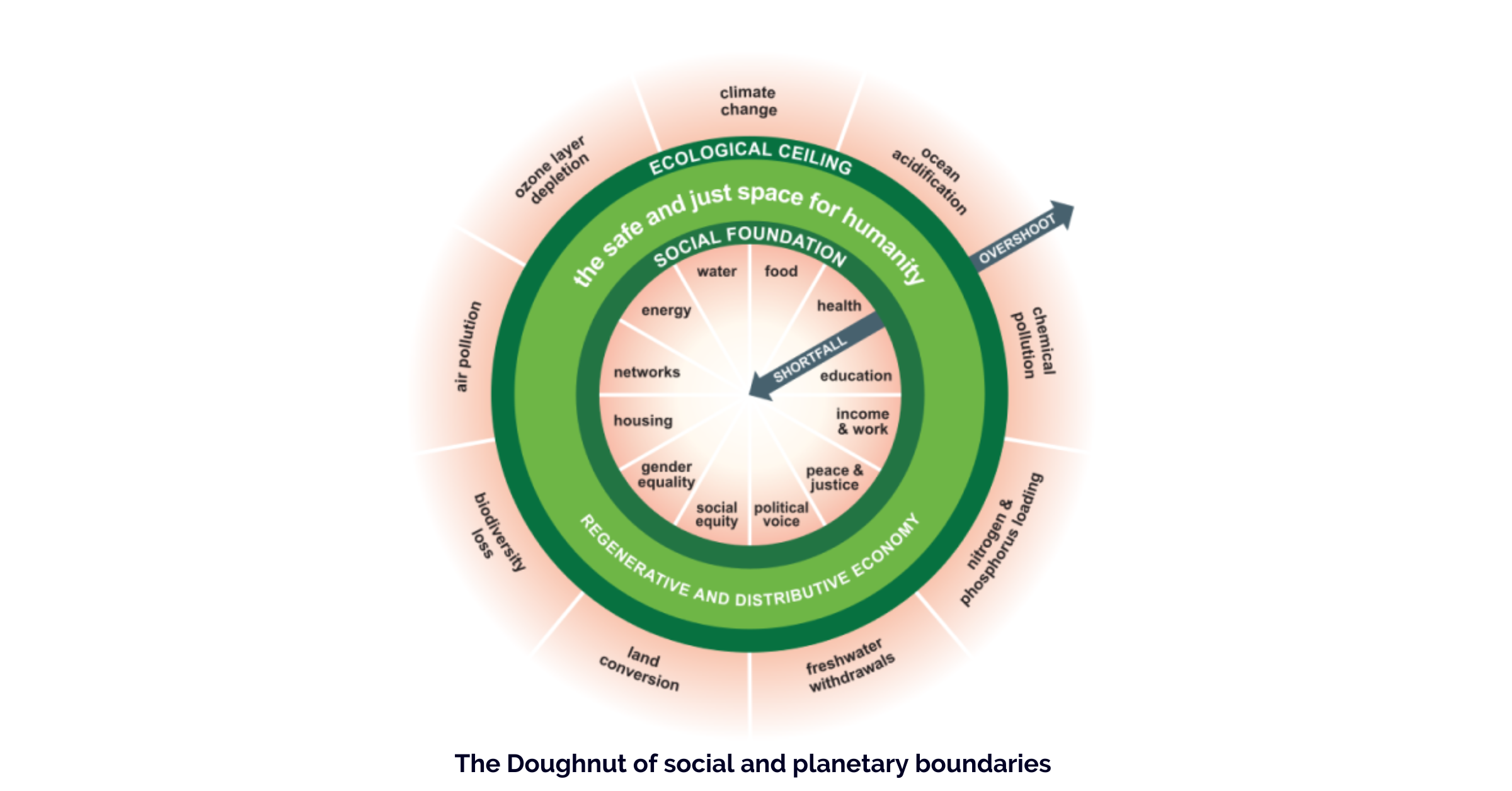
The Framework
Doughnut Economics is an economic model developed by the English economist Kate Raworth, which provides an alternative model to growth economics, with a strong sustainability approach. Doughnut economics is visualised in the image below as reflecting both planetary and social boundaries. The key aim of the model is to re-frame economic problems, and to achieve a system where people and nature flourish.

What are the main sustainability issues with the contemporary business model?
Contemporary business models can be characterised by the continuous aim for growth and profit maximisation. This report has identified five unsustainable characteristics that needs to be addressed if business is to thrive in a sustainable economy. While we examine these issues separately, they are not mutually exclusive but rather mutually reinforcing and highly interrelated.

Five traits that need to be considered by firms operating in alignment with the Doughnut
Doughnut Economics is primarily used as a framework to guide the economy in a holistic manner. Raworth has however, identified five traits that need to be considered by firms operating in alignment with the Doughnut:
- The business’ purpose
- Governance
- Network
- Ownership
- Quality of finance
These five traits provide the foundations from which a business can be organised to support the Doughnut economy, and from which its performance can be measured. Moreover, Raworth identifies two additional goals of a sustainable economy as being regenerative and distributive.
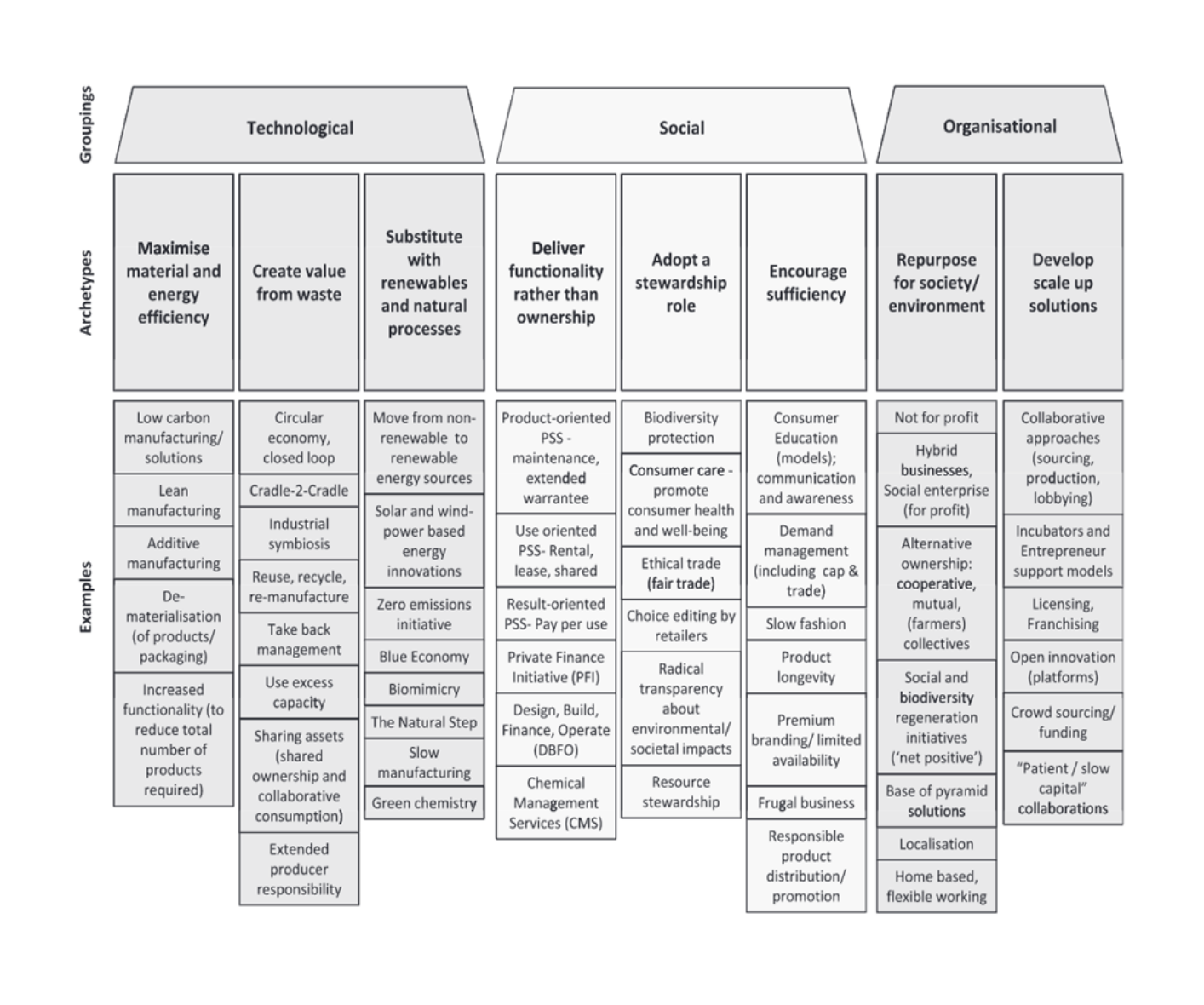
Sustainable business model archetypes
The archetypes address the essential characteristics of a sustainable business model, from how the products are designed and delivered to the organisation’s ownership and purpose. However, the theory does not emphasise the need to embed several of the archetype’s characteristics and moreover fails to recognise the need to encompass sustainable characteristics throughout the entire business model, as will be discussed in this section of the report.
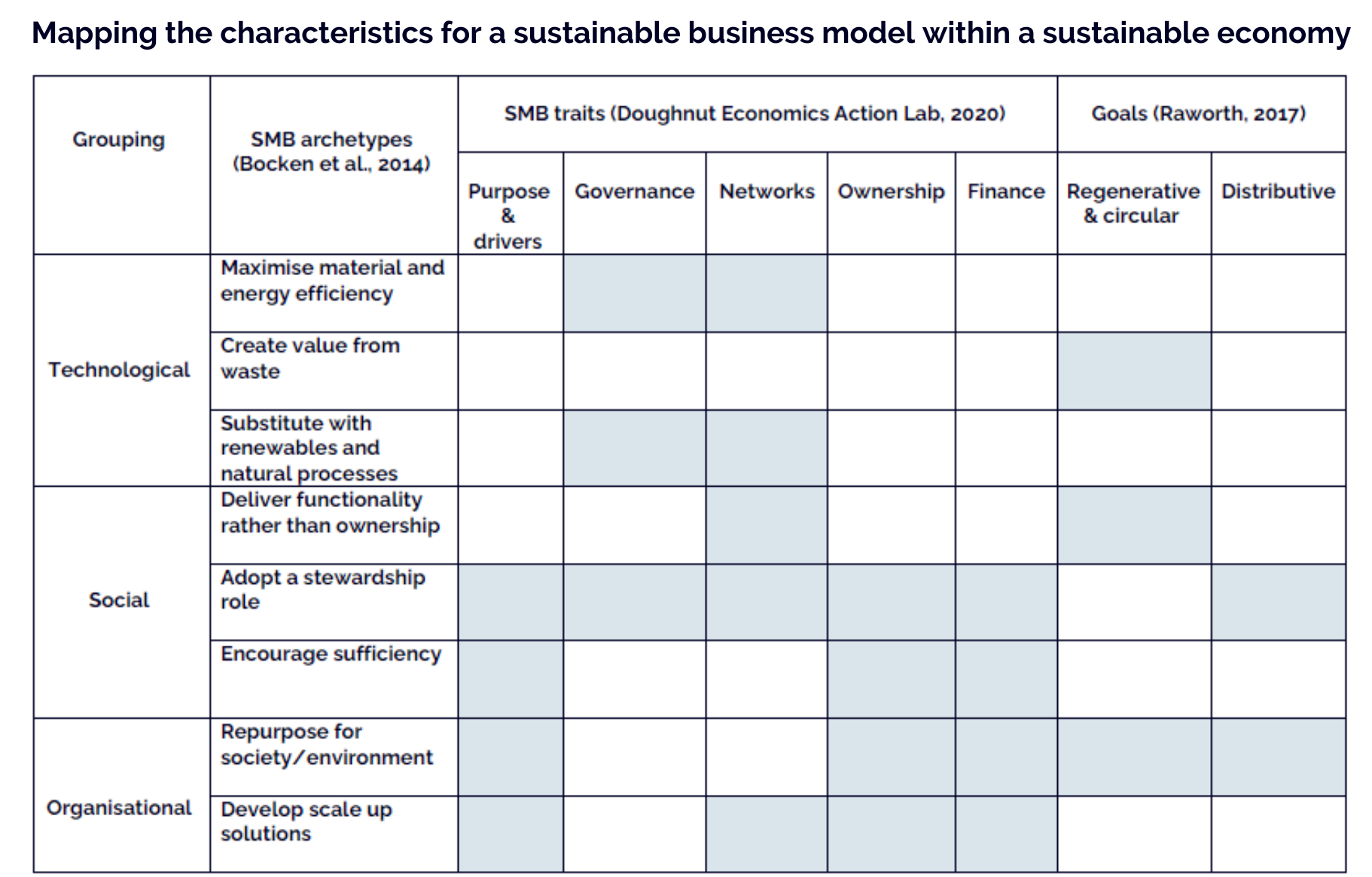
By combining the five traits and two goals of Doughnut Economics outlined above, and the eight sustainable business model archetypes a picture begins to form for what is required for a business model to thrive in a sustainable economy. This image maps the different traits, goals and archetypes and how they connect. Based on an analysis of the two different frameworks, five foundational areas have been identified:
- Purpose
- Organisation
- Circular and regenerative production
- Delivery of product or solution, and
- Impact

Five features of a sustainable business model
The report compares the Doughnut Economics framework to established sustainable business model characteristics to understand how well they meet the demands of a sustainable economy. In doing so, five areas emerge which each businesses will need to address if they are to thrive in a sustainable economy.
Sustainable business model canvas
This report proposes a new framework to understand the characteristics of a sustainable business model aligned with a sustainable economy. The canvas can be used by both companies and investors to assess a company’s alignment with a sustainable economy.

View the report
Please login or join for free to download the report.



